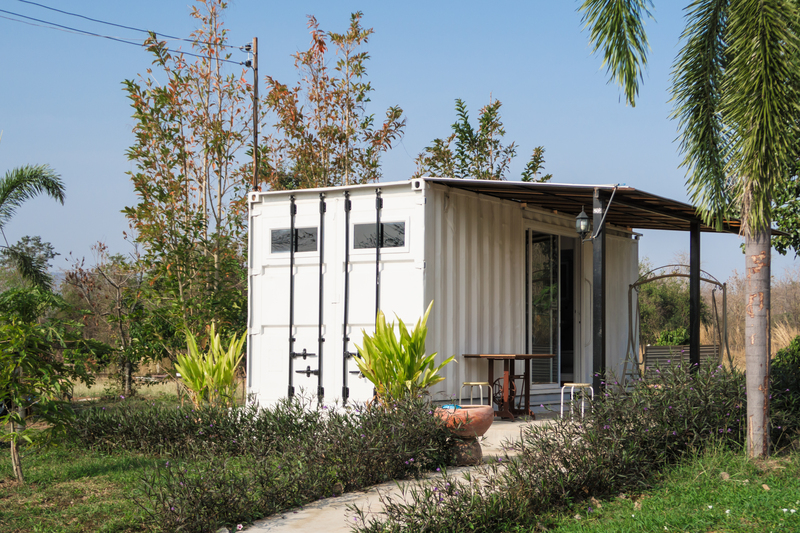Environmentally Conscious Ways to Rehome Cookware
Are your kitchen cabinets overflowing with pots, pans, and baking dishes you no longer use? If you're considering a kitchen declutter or a cookware upgrade, think twice before tossing your old utensils in the trash. Cookware, whether it's a nonstick pan or a cast-iron skillet, can often find a new purpose when you use environmentally conscious ways to rehome cookware. In this informative and comprehensive guide, we'll explore responsible, sustainable, and impactful ways to rehome your cookware, benefitting both your community and the planet.

Why Choosing Sustainable Cookware Disposal is Essential
Did you know that millions of tons of household goods, including used cookware, end up in landfills every year? Many of these items, made from materials such as aluminum, stainless steel, and ceramic, take decades or even centuries to break down. Nonstick pans, saucepans, baking sheets, and other kitchenware can release toxic chemicals when incinerated or discarded improperly, causing harm to our planet.
By adopting eco-friendly cookware rehoming methods you not only keep useful items out of landfills, but you also reduce waste, support charitable initiatives, and allow others to benefit from items you no longer need. Let's explore practical and impactful ways to pass on your gently used pots, pans, and bakeware.
Assessing the Condition of Your Old Cookware
Before rehoming cookware, it's important to take a critical look at what you have. Items that are still functional and safe can be rehomed, while broken, heavily rusted, or unsafe cookware (like nonstick pans with flaking Teflon) may need to be recycled or disposed of responsibly. When deciding, consider:
- Structural integrity: Is the handle secure? Is the pot dent-free?
- Coating condition: Is the nonstick surface still intact, or are there chips and flakes?
- Hygiene: Can it be sanitized and reused safely?
In general, gently used cookware can and should be given a second life. Next, let's look at the best methods to rehome your kitchen gear.
Donate Your Cookware to Charities and Nonprofits
One of the most impactful and environmentally conscious ways to rehome cookware is through donation. Many families, college students, and individuals starting anew are in need of basic kitchen equipment. Consider donating to:
- Local charity thrift stores (Goodwill, Salvation Army, Habitat for Humanity)
- Homeless shelters and housing organizations that help people transition to independent living
- Community centers or soup kitchens in need of durable, functional cookware
- Churches, places of worship, or other local groups supporting those in need
Before donating, always clean your cookware thoroughly. If possible, include any matching lids or accessories. Check with the organization for their donation guidelines to ensure your items will be accepted and put to good use.
Share Cookware with Friends, Family, and Community Members
You don't have to go far to find someone who could use an extra pan or mixing bowl. Environmentally friendly cookware rehoming can start right in your own circle of friends and family. Share on social media, community bulletin boards, or during a get-together.
Community Sharing Platforms
- Facebook Marketplace and Neighborhood Groups
- Nextdoor app for hyperlocal gifting
- Buy Nothing Project groups focused on gifting and sharing within your zip code
- Craigslist's "Free" section
When you give away cookware locally, you reduce packaging waste, shipping energy, and emissions, making it a truly green choice.
Sell Gently Used Cookware Online
If you have high-quality, specialty, or lightly-used cookware, selling is a fantastic option. You'll reduce waste, support the circular economy, and possibly earn some extra cash. Top platforms include:
- eBay: For brand name or vintage cookware
- Facebook Marketplace: Local buyers, no shipping necessary
- OfferUp, Mercari, and Poshmark: Apps for easy listing and selling
- Specialized groups for home and kitchen goods
Pro tip: Take clear photos, specify any scratches or wear, and be honest in your item descriptions. Well-made cookware brands (All-Clad, Le Creuset, Calphalon, etc.) tend to resell especially well.
Creative Upcycling: Give Cookware a Second Life
Some cookware may no longer be safe or functional in the kitchen, but that doesn't mean it's destined for the landfill. Upcycling is an inventive and sustainable cookware disposal method. Transform old pans, pots, or trays into unique garden, storage, or decorative pieces. Here are a few ideas:
- Turn a colander into a hanging planter or fruit basket
- Use an old skillet as a small wall-mounted shelf or key holder
- Paint and decorate baking tins as office or craft supply organizers
- Drill holes in old saucepan lids to make windchimes or mobiles
- Create garden stepping stones using the base of old pans
Not only does upcycling reduce waste, but it adds a personal, creative touch to your home or garden.
Recycle Cookware Responsibly
If your cookware is worn out, damaged, or cannot be safely reused, responsible recycling is the next best option. Metal cookware--like stainless steel, cast iron, aluminum--can often be recycled. Here's how to do it the eco-friendly way:
Check Local Recycling Guidelines
- Contact your local recycling center to see if they accept pots and pans (most curbside pickups do not)
- Scrap metal yards will usually take cookware, often regardless of condition
- Remove any non-metal parts (such as plastic, rubber handles, or glass lids) before recycling
*Note: Nonstick coatings, especially Teflon, may not be recyclable in all areas. Always check first.*
Never put cookware in the general trash if it can be recycled or reused.
Take Advantage of Manufacturer Take-Back or Recycling Programs
Some brands and retailers are stepping up with environmentally responsible cookware recycling and take-back programs. For example:
- GreenPan's Cookware Recycling Program: Send in your old pans (any brand) for responsible recycling when you purchase a new set.
- TerraCycle: Offers zero-waste kitchen gear mail-in recycling boxes.
Check with cookware brands or kitchen retailers in your area to see if they offer sustainable disposal or recycling services. This is an excellent way to ensure your cookware is processed responsibly.
Support Local Artists and Makers
Many local artists and craftspeople seek out old cookware for creative projects, sculptures, or installations. Share your unwanted pots and pans at craft supply swaps, local art schools, or through community art centers.
- Contact art teachers or colleges about donating materials
- Post offerings on community online bulletin boards
- Check if local makerspaces accept household goods for repurposing
Supporting artists not only diverts cookware from landfills but fuels creative reuse and crafts in your community.
Host a Cookware Swap Event
One of the most engaging environmentally conscious cookware rehoming ideas is organizing a cookware swap. Invite friends, family, or neighbors to bring gently used kitchen items, utensils, and cookware they no longer need. Not only does this foster a sense of community and sharing, but it gives everyone a chance to rejuvenate their kitchen with "new-to-you" items--no waste involved!
- Set up a swap at your local community hall, school, or even your backyard
- Advertise on neighborhood apps or social media
- Offer tips on cleaning and sanitizing items beforehand
- Donate unclaimed items to charity afterward
A cookware swap is a sustainable, fun, and social way to promote reuse and diminish single-use culture.

Choosing Sustainable Cookware for the Future
After responsibly rehoming your old cookware, it's time to consider how you'll purchase and care for kitchenware going forward. A sustainable kitchen isn't just about reducing waste at the end of an item's life--it starts with smart, planet-friendly choices.
- Invest in durable, high-quality cookware that will last years, not months
- Choose items made from recyclable materials like stainless steel, cast iron, or glass
- Look for brands with sustainable packaging and take-back programs
- Take excellent care of your pans and pots to extend their lifespan
- Repair rather than replace when possible (e.g., tightening handles)
By thinking ahead, you can participate in the circular kitchen economy and minimize environmental impact with every meal.
Make a Positive Impact with Eco-Conscious Cookware Rehoming
Choosing environmentally conscious ways to rehome cookware isn't just about reducing landfill waste--it's about fostering a culture of sharing, creativity, and stewardship. Whether you're donating, upcycling, swapping, or recycling, each action contributes to a healthier planet and more resilient communities.
Next time you're clearing out your kitchen cupboards, remember: there is an eco-friendly solution for every piece of cookware. Embrace mindful rehoming and make sustainable choices a central part of your cooking journey.
- Donate when you can
- Give or sell locally
- Explore creative reuse
- Recycle responsibly
By following these principles, you ensure your kitchenware continues to serve a purpose--sustainably.
